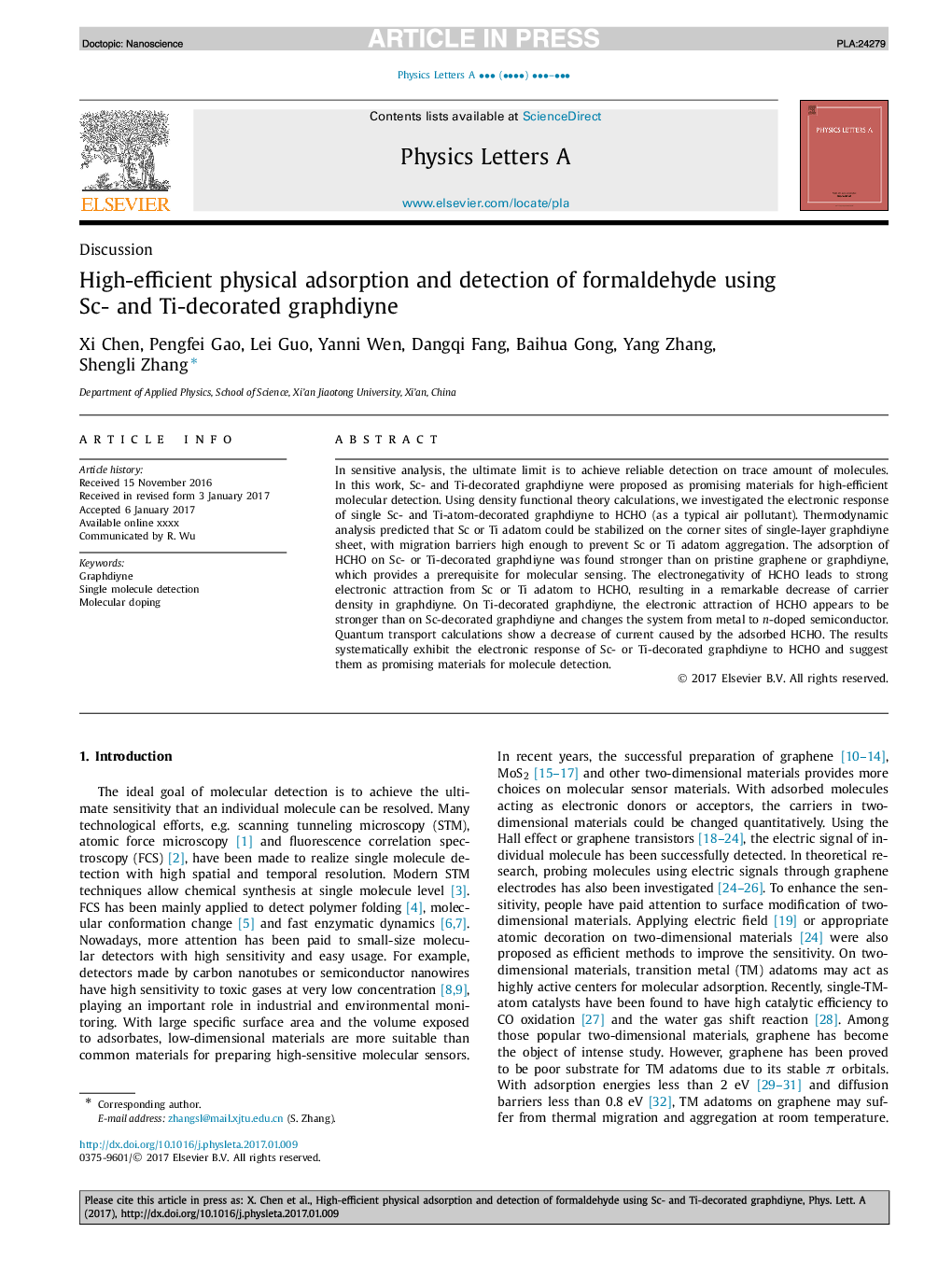| Article ID | Journal | Published Year | Pages | File Type |
|---|---|---|---|---|
| 5496961 | Physics Letters A | 2017 | 7 Pages |
Abstract
In sensitive analysis, the ultimate limit is to achieve reliable detection on trace amount of molecules. In this work, Sc- and Ti-decorated graphdiyne were proposed as promising materials for high-efficient molecular detection. Using density functional theory calculations, we investigated the electronic response of single Sc- and Ti-atom-decorated graphdiyne to HCHO (as a typical air pollutant). Thermodynamic analysis predicted that Sc or Ti adatom could be stabilized on the corner sites of single-layer graphdiyne sheet, with migration barriers high enough to prevent Sc or Ti adatom aggregation. The adsorption of HCHO on Sc- or Ti-decorated graphdiyne was found stronger than on pristine graphene or graphdiyne, which provides a prerequisite for molecular sensing. The electronegativity of HCHO leads to strong electronic attraction from Sc or Ti adatom to HCHO, resulting in a remarkable decrease of carrier density in graphdiyne. On Ti-decorated graphdiyne, the electronic attraction of HCHO appears to be stronger than on Sc-decorated graphdiyne and changes the system from metal to n-doped semiconductor. Quantum transport calculations show a decrease of current caused by the adsorbed HCHO. The results systematically exhibit the electronic response of Sc- or Ti-decorated graphdiyne to HCHO and suggest them as promising materials for molecule detection.
Related Topics
Physical Sciences and Engineering
Physics and Astronomy
Physics and Astronomy (General)
Authors
Xi Chen, Pengfei Gao, Lei Guo, Yanni Wen, Dangqi Fang, Baihua Gong, Yang Zhang, Shengli Zhang,
